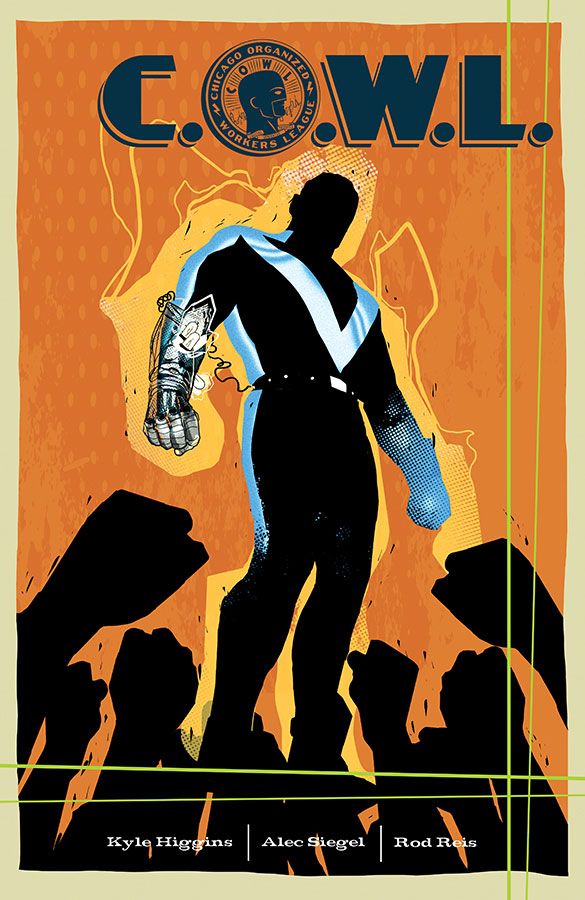Chicago politics, 1960s social attitudes and superheroes make for a tense and fascinating mix in "C.O.W.L." #4, written by Kyle Higgins and Alec Siegel and stylishly drawn by regular series artist/colorist Rod Reis, joined this issue by Stephane Perger. C.O.W.L. stands for Chicago Organized Workers League, which is the union representing all of the superheroes who work for the city. That's right, even superheroes can unionize, and therefore go on strike, which in fact they do as this issue begins.
Higgins and Siegel's story isn't a gimmicky one that stretches to mine another spin on the spandex crowd; it's an actual amalgamation of superheroes and the complex, agenda-driven nature of local politics. It's a convincing blend that has an oddly natural feel; had anyone ever stopped to wonder how things would ever go down if superheroes were on a local municipality's payroll, a likely outcome would be the vision Higgins and Siegel have established here.
Despite most of the central characters having superpowers, there's a sense of authenticity here that's driven by all creators involved doing their homework regarding the locale, fashions, and social behavior. The city is clearly recognizable as Chicago, even without depicting any well-known landmarks, made so by artists' careful attention to detail; the feat is all the more commendable due to the story's setting over fifty years ago. Reis and Perger pull off the look, while Higgins and Siegel pull off the feel; otherwise inconsequential elements, like the pervasive sexist overtones that existed in regular conversation make it feel genuine.
The believable nature of the story is embellished by its own clever plot, where Higgins and Siegel put the perceived altruistic nature of superheroes in the midst of a system that's been skewed by political machinations, at best, and flat out corrupted, at worst. C.O.W.L. is on strike against the city over a contract, which seems trivial compared to the larger, ideological divide between the two. And some of the members themselves have become caught up in this, where the upstanding thing to do is put aside in favor of public relations and political posturing.
Higgins and Siegel also put forth a generational divide, where the need for wartime heroes is questioned in a modern era where supervillains have largely been defeated and a new kind of villain (organized crime, explicitly, but crooked government officials can also be implied) have risen. It's a what-if scenario on the surface, but the writers tackle some very real issues in the process. And the inevitable confrontation that caps off the issue only hammers all of these points home, while escalating the tension that makes next month's issue seem a long, long way off.
Reis is a superb artist, not only bringing Chicago circa 1962 to life, but doing so with a soft, colorful flair that works well to bring out the retro look and feel of the issue. Perger is no less adept at evoking the general vibe of the story, but has more delineated and crisper style that's noticeably dissimilar. The transitions between the two artists' pages aren't seamless, but aren't terribly distracting either; it's clear that there are multiple hands at work, but beyond noticing that fact, there's no real detriment to the story.
"Crime Story" meets "Astro City" in "C.O.W.L." #4, combining superheroes, politics, social structure and ideological disparities into one very compelling issue with the kind of depth that wouldn't necessarily be expected from such an intriguing but much-simpler sounding premise.

